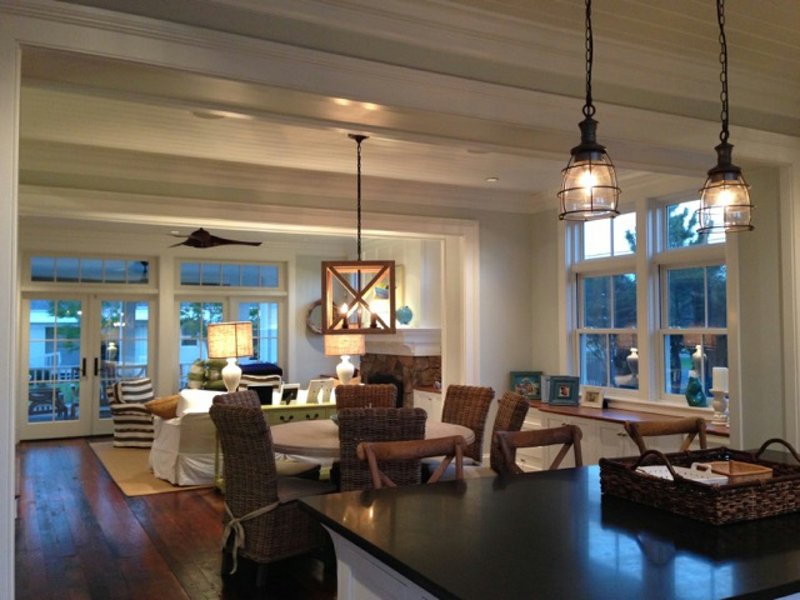As the kitchen has crept out of its small little spot at the back of the house and become the focal point of the home, as data from the American Institute of Architects suggest, architects have struggled with how to not let it dominate the living space. But what if we accept that it can be one thing, the living-kitchen?
The term living-kitchen is a combination of kitchen, as in the room where food is prepared and cooked, and living room, the other name of the family gathering space that was understood long before "great room" and "family room" came into the style lexicon.
I recently came across the term in Architectural Record and several concepts resounded with me:
In the past, social activity around food was the exclusive province of the dining room.
As family life and our food culture have changed, social activity is now encompassing food preparation -- perhaps even equal to the consumption of the meal.
When the line between the kitchen and dining room first blurred, the answer was the great room, which I have been designing in larger houses for years. We've also done quite a bit of work redesigning older, small kitchens from the 1920s with additions to accommodate a sitting room and larger breakfast area. The reality, though, is that the breakfast area is not just for breakfast, but the place where everyone hangs out when food is being prepared.
If we embrace the term living-kitchen, we must do more than just make the kitchen a bigger room with a place to hang out; we need to deconstruct the entire traditional kitchen design concept, beginning with the word "triangle."
The triangle is the term describing the best arrangement of space between the oven, sink and refrigerator. Traditionally, the smaller the triangle, the better the kitchen functioned. This may have been true when one person was doing the cooking, but it doesn't really fit the way we live and cook today.
Here's what you need to ask yourself when considering whether to enlarge the triangle:
How do you accommodate two or more cooks working?
How can you allow access to the outside grill, which is sometimes used more than the inside cooktop?
What happens when the kids need to hang out and grab a snack, or guests at a dinner party need a glass of wine?
In these cases, the triangle fails miserably. Traffic is endlessly cutting through the prep, cook and cleanup zones.
The reality is that a functional living-kitchen might need another prep sink and maybe a second, small 18-inch glassware dishwasher, perhaps even multiple smaller distinct refrigeration units and even refrigeration drawers placed where you need them for each function. Is it outrageous to suggest that we no longer need the single refrigerator of our mother's day? Maybe not. Think how liberated the space could be without 36 to 48-plus inches of wall space covered with a fridge/freezer.
Only in shaking things up and out of the triangle can we really start to design smarter and even smaller, more efficient spaces.
If we think outside the box (um, triangle), we can also throw out spaces as obsolete in function as they are in name: "breakfast room" for starters and "sitting room."
Laura Thomas is the founder and president of Melville Thomas Architects in Baltimore.
HomeStyle on 10/22/2016
